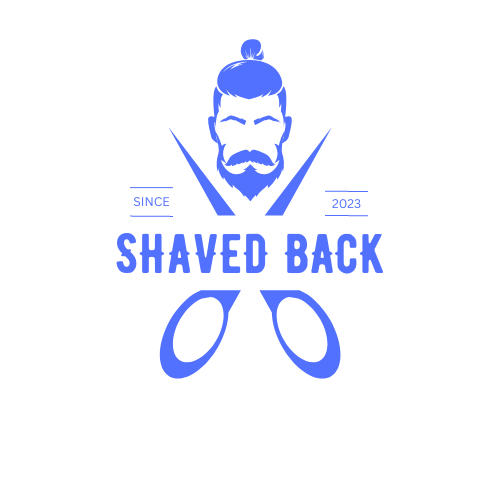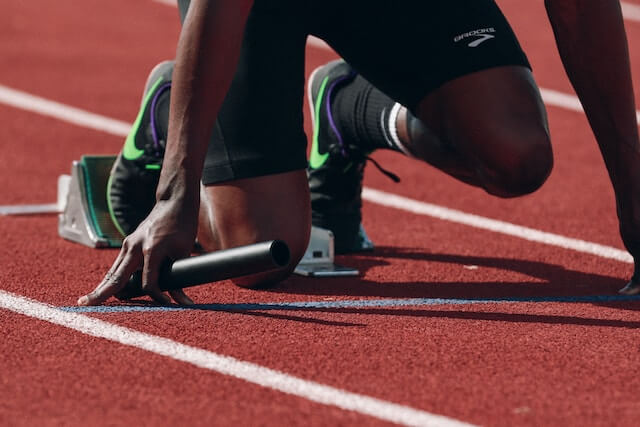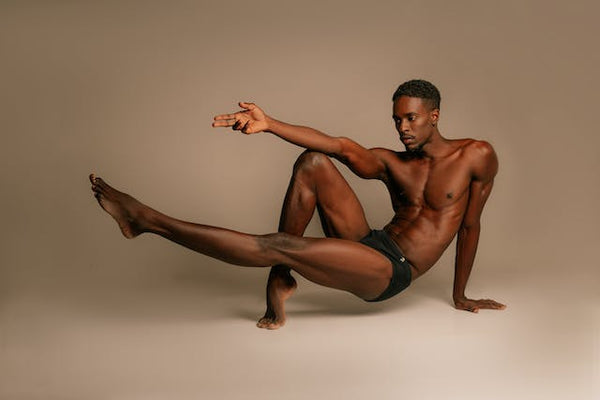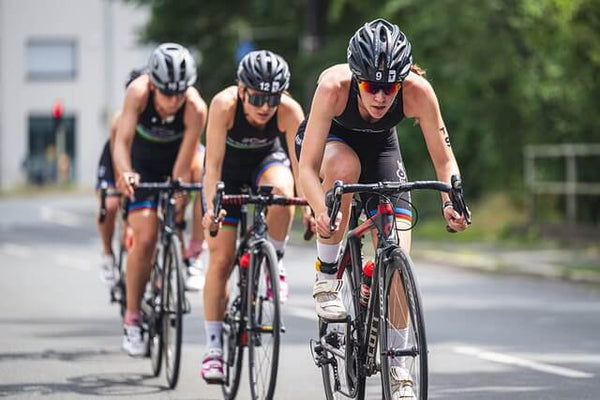Greetings fitness enthusiasts and sports buffs! Today, we're diving into a fascinating topic that might raise a few eyebrows – the dynamic relationship between hair removal and athletic prowess. Yes, you heard it right; we're not just talking about aesthetics here. Athletes have been strategically embracing hair removal, turning it into a not-so-secret weapon. Join us on this journey as we unravel the science, historical significance, and the surprising advantages of bidding farewell to those locks in the realm of sports. Hold onto your hats – this exploration might just reshape your perspective on grooming rituals!
Table of Contents:
- The Role of Hair in Human Physiology
- Historical Context of Hair Removal in Sports
- Benefits of Hair Removal for Athletes
- Potential Risks Associated with Hair Removal
- Different Methods of Hair Removal for Athletes
- Frequently Asked Questions (FAQ)
The Role of Hair in Human Physiology
Hair – it's not merely a decorative feature adorning our bodies, but a complex and integral aspect of our physiology. Beyond the aesthetics, our hair serves a multitude of functions, playing a crucial role in maintaining the delicate balance of our overall health. Let's take a deep dive into the intricate world of the role of hair in human physiology.
1. Regulation of Body Temperature:
Our hair is a key player in the body's thermoregulation system. Think of it as a natural insulator. In cold conditions, hair stands on end (piloerection) to trap air and create an extra layer of insulation. Conversely, in warmer temperatures, it lays flat to allow heat to escape. This dynamic mechanism helps regulate body temperature, ensuring our internal environment stays within optimal limits.
2. Sensory Functions:
Each hair follicle is equipped with nerve endings, turning our hair into sensitive receptors. These receptors pick up on environmental stimuli, providing us with a heightened sense of touch. This sensory function is more significant than we might realize, contributing to our ability to perceive and respond to the world around us.
3. Protection Against UV Radiation:
Believe it or not, our hair acts as a natural barrier against harmful ultraviolet (UV) radiation from the sun. It shields the scalp, preventing sunburns and reducing the risk of skin damage. This protective function underscores the evolutionary importance of hair in ensuring our well-being in various environments.
4. Immune System Support:
Hair follicles also play a role in our body's immune system. They house stem cells that actively participate in the skin's defense mechanisms. This interaction highlights the intricate connection between our hair and the body's ability to ward off infections and maintain overall skin health.
5. Social and Cultural Significance:
Beyond its physiological functions, hair holds immense social and cultural importance. Hairstyles, colors, and grooming practices often serve as expressions of identity, cultural heritage, and personal style. The social aspect of hair adds another layer of complexity to its overall role in our lives.
Historical Context of Hair Removal in Sports
Embarking on a journey through time, we uncover the historical tapestry that weaves the relationship between athletes and the act of hair removal. From ancient civilizations to the contemporary sports arena, the ritualistic shearing of hair has transcended cultures and epochs. Let's delve into the historical context, unearthing the motivations and cultural nuances that have shaped the enduring tradition of hair removal in the realm of sports.
1. Ancient Greek Olympians:
The roots of hair removal in sports trace back to ancient Greece, where Olympians pursued physical perfection as a tribute to the gods. Athletes, keen on showcasing their prowess and sculpted bodies, engaged in hair removal rituals. The absence of body hair was not merely an aesthetic choice but a symbol of dedication and homage to the divine.
2. Swimmers and the Competitive Edge:
As we transition through time, we find swimmers in the early 20th century adopting the practice of hair removal. The quest for speed and efficiency in the water led to the widespread adoption of shaving. A streamlined, hair-free body became synonymous with enhanced performance, laying the foundation for a tradition that persists in aquatic sports to this day.
3. Cyclists and Aerodynamics:
In the world of cycling, the desire for aerodynamic advantages drove athletes to shed body hair. Reduced wind resistance became a sought-after benefit, particularly in the highly competitive realm of professional cycling. The historical context of hair removal in cycling underscores the lengths to which athletes go for that marginal gain that could make all the difference in a race.
4. Wrestling and Tradition:
Across various combat sports, including wrestling, the act of hair removal has historical roots intertwined with tradition and symbolism. Wrestlers often partake in grooming rituals as a display of discipline, commitment, and a commitment to the sport's long-standing heritage.
5. Modern Grooming Culture:
In contemporary sports culture, the tradition of hair removal has become ingrained in grooming routines. Athletes across disciplines embrace a hair-free aesthetic, driven by a combination of tradition, performance benefits, and the influence of peer practices.
Benefits of Hair Removal for Athletes
In the world of sports, athletes are known to explore every avenue to gain a competitive edge. Enter the realm of hair removal – a practice that extends beyond aesthetics and dives into the realm of performance enhancement. Let's uncover the surprising benefits that athletes reap when they decide to bid farewell to body hair.
1. Aerodynamic Advantages:
Picture this: a swimmer gliding through the water, a cyclist cutting through the wind, or a sprinter slicing through the air. The absence of body hair minimizes drag, providing athletes with a tangible aerodynamic advantage. Every fraction of a second counts in the pursuit of victory, and reduced resistance can be the key to shaving off crucial milliseconds.
2. Enhanced Muscle Definition:
Sculpted muscles deserve the spotlight. For bodybuilders and athletes whose sports emphasize muscle definition, a hair-free canvas showcases their hard work. Without the distraction of body hair, every contour and bulge becomes more pronounced, creating a visually striking and competitive advantage during physique-centric competitions.
3. Improved Cooling Efficiency:
Efficient thermoregulation is paramount for athletes pushing their physical limits. Without the insulating layer of body hair, sweat can evaporate more effectively, facilitating enhanced cooling. This becomes especially crucial in endurance sports where temperature regulation can make a substantial difference in an athlete's stamina and performance.
4. Reduced Friction and Chafing:
Endurance athletes, rejoice! Hair removal significantly reduces friction between the body and clothing, minimizing the risk of painful chafing. Whether it's the repetitive motion of running or the constant contact with sports equipment, a smooth, hair-free surface contributes to a more comfortable and friction-free experience.
5. Psychological Boost:
The psychological impact of hair removal shouldn't be underestimated. Athletes often report a heightened sense of cleanliness, confidence, and even a psychological boost after shedding body hair. Feeling sleek and streamlined can contribute to a positive mindset, crucial for peak athletic performance.
6. Hygienic Considerations:
In sports where hygiene is paramount, such as swimming, hair removal plays a practical role. A hair-free body is easier to maintain, reducing the risk of skin infections and promoting overall cleanliness, especially in water-based activities.
7. Injury Management:
When it comes to injury management, a hair-free body is more conducive to proper wound care. Without the interference of body hair, athletes can better monitor and treat injuries, ensuring a faster and more effective recovery process.
Potential Risks Associated with Hair Removal
While the benefits of hair removal in the athletic realm are compelling, it's crucial to acknowledge that every grooming choice comes with its set of considerations. Let's explore the potential risks associated with hair removal, ensuring that athletes make informed decisions on their journey to peak performance.
1. Skin Irritation and Sensitivity:
The repeated act of hair removal, especially through methods like shaving or waxing, can lead to skin irritation and increased sensitivity. Athletes, already prone to skin stress from rigorous training, should be cautious to avoid exacerbating these issues.
2. Ingrown Hairs:
Ingrown hairs, resulting from hair growing back into the skin instead of outward, can be a common consequence of hair removal. Not only can they be uncomfortable, but they may also pose an increased risk of infection, especially in athletes engaged in activities where skin contact is prevalent.
3. Infection Risks:
Athletes with freshly removed hair may be more susceptible to infections. Cuts, nicks, or irritations from the hair removal process can serve as entry points for bacteria. Proper hygiene practices and post-removal care are crucial to mitigate infection risks.
4. Allergic Reactions to Products:
Many hair removal methods involve the use of creams, gels, or waxes that may contain chemicals. Athletes should be aware of potential allergic reactions to these products, ranging from mild irritation to more severe responses.
5. Regrowth Discomfort:
As hair begins to regrow, athletes may experience discomfort, itching, or redness. This phase can be challenging for those engaged in intense training, and consideration should be given to timing hair removal to align with competition schedules.
6. Impact on Sweat Evaporation:
While hair removal aids in improved cooling efficiency, athletes should be mindful of potential drawbacks. Without the insulating properties of body hair, sweat may evaporate too rapidly, potentially impacting the body's ability to regulate temperature during intense physical activity.
7. Psychological Impact:
For some athletes, the psychological impact of hair removal may pose a risk. Unrealistic expectations or societal pressures to conform to certain grooming standards can contribute to body image concerns. It's essential for athletes to engage in hair removal practices for reasons that align with their personal well-being and performance goals.
8. Cost and Time Commitment:
Certain hair removal methods, such as laser treatments, can be costly and time-consuming. Athletes should weigh the financial and time commitments associated with various hair removal techniques against the perceived benefits.
Different Methods of Hair Removal for Athletes
In the quest for peak performance, athletes explore various methods of hair removal to gain that extra edge. From traditional to high-tech, let's unravel the spectrum of hair removal techniques available for athletes, each with its unique pros and cons.
1. Shaving:
- Pros: Quick, cost-effective, and can be done at home. Shaving offers instant results without significant downtime.
- Cons: Potential for skin irritation, ingrown hairs, and the need for frequent maintenance.
2. Waxing:
- Pros: Longer-lasting results compared to shaving, with hair taking longer to regrow. Smooth skin for an extended period.
- Cons: Can be painful, may cause skin irritation, and requires regrowth before the next session.
3. Depilatory Creams:
- Pros: Pain-free application, relatively quick, and can be done at home. Hair regrowth tends to be slower than shaving.
- Cons: Chemical content may cause skin irritation or allergic reactions. Results vary in terms of effectiveness.
4. Laser Hair Removal:
- Pros: Offers long-term reduction in hair growth. Precision targeting and less risk of ingrown hairs compared to other methods.
- Cons: Expensive, requires multiple sessions, and may not guarantee complete hair removal. Can cause temporary redness and discomfort.
5. Electrolysis:
- Pros: Permanent hair removal method. Targets individual hair follicles, making it suitable for smaller areas.
- Cons: Time-consuming, costly, and can cause discomfort. Multiple sessions are needed for optimal results.
6. Sugaring:
- Pros: Natural alternative to waxing, with less risk of skin irritation. Can be less painful than traditional waxing.
- Cons: Requires a specific skill set for application. Results may not last as long as other methods.
7. Trimming:
- Pros: Maintains a groomed appearance without completely removing hair. Ideal for athletes who want a neat look without the drawbacks of full removal.
- Cons: Hair regrows quickly, requiring frequent maintenance. Less effective for reducing drag or improving aerodynamics.
8. IPL (Intense Pulsed Light) Hair Removal:
- Pros: Similar to laser hair removal but covers larger areas more quickly. Can offer long-term reduction in hair growth.
- Cons: Costly, requires multiple sessions, and may not work well on all skin and hair types.
9. Threading:
- Pros: Precise hair removal method that doesn't involve chemicals. Suitable for smaller areas and facial hair.
- Cons: Can be painful, requires skill, and may not be practical for larger body areas.
Frequently Asked Questions (FAQ)
Q1: Why do athletes remove body hair?
A: Athletes remove body hair for various reasons. It can enhance aerodynamics, reduce friction in sports like swimming and cycling, showcase muscle definition, and contribute to a cleaner and more streamlined appearance.
Q2: What is the best method of hair removal for athletes?
A: The best method depends on personal preferences, pain tolerance, and desired results. Shaving is quick and cost-effective, while laser hair removal offers longer-term reduction. Athletes often choose based on factors such as efficiency, comfort, and the duration of hair-free results.
Q3: Does hair removal impact athletic performance?
A: Yes, hair removal can impact athletic performance. The benefits include improved aerodynamics, reduced friction, and enhanced cooling efficiency. Athletes may experience a psychological boost, and certain sports, like swimming, often require hair removal for competitive reasons.
Q4: Are there risks associated with hair removal?
A: Yes, potential risks include skin irritation, ingrown hairs, and allergic reactions to products. Athletes should be mindful of these risks and take precautions, such as proper hygiene and post-removal care.
Q5: How often should athletes remove body hair?
A: The frequency of hair removal depends on the chosen method and personal preferences. Shaving may require more frequent maintenance, while methods like waxing or laser treatments offer longer-lasting results.
Q6: Can hair removal methods impact skin health?
A: Yes, certain methods, especially if not done correctly, can impact skin health. Ingrown hairs, skin irritation, and the potential for infection are considerations. Choosing appropriate methods and maintaining good skincare practices can mitigate these risks.
Q7: Is laser hair removal permanent?
A: Laser hair removal offers long-term reduction, but it's not always permanent. Multiple sessions are usually required for optimal results, and maintenance sessions may be needed over time.
Q8: Does hair removal affect sweat and temperature regulation?
A: Yes, hair removal can impact sweat evaporation and temperature regulation. While it improves cooling efficiency, athletes should be mindful of potential drawbacks, such as rapid sweat evaporation during intense physical activity.
Q9: Are there cultural or personal reasons for athletes to remove body hair?
A: Yes, cultural and personal preferences play a role in athletes' decisions to remove body hair. Some sports may have cultural traditions associated with hair removal, while individual athletes may choose to do so for personal comfort, aesthetics, or adherence to grooming norms.
Q10: Can hair removal be done before competitions?
A: Yes, many athletes choose to time their hair removal routines around competitions. However, factors like potential skin sensitivity, regrowth discomfort, and personal preferences should be considered when planning hair removal before important events.
Conclusion
In conclusion, the exploration of hair removal in the athletic realm reveals a complex interplay between tradition, performance, and personal choice. Athletes, driven by a quest for optimal performance, leverage hair removal not only for its aesthetic benefits but as a calculated strategy to enhance speed, showcase muscle definition, and contribute to overall streamlined efficiency. The historical roots of this grooming practice, spanning from ancient traditions to modern sports culture, underscore its enduring significance in the narrative of athletic prowess.
However, this journey is not without its considerations. Athletes must carefully navigate the potential risks associated with various hair removal methods, ranging from skin irritation to psychological impacts. Striking a delicate balance between the advantages and drawbacks is crucial as athletes tailor their grooming routines to align with their unique needs and goals. Ultimately, the world of hair removal for athletes is a multifaceted landscape where tradition, innovation, and personal empowerment converge, presenting athletes with an opportunity to fine-tune both their physical and psychological preparation for the challenges ahead.




